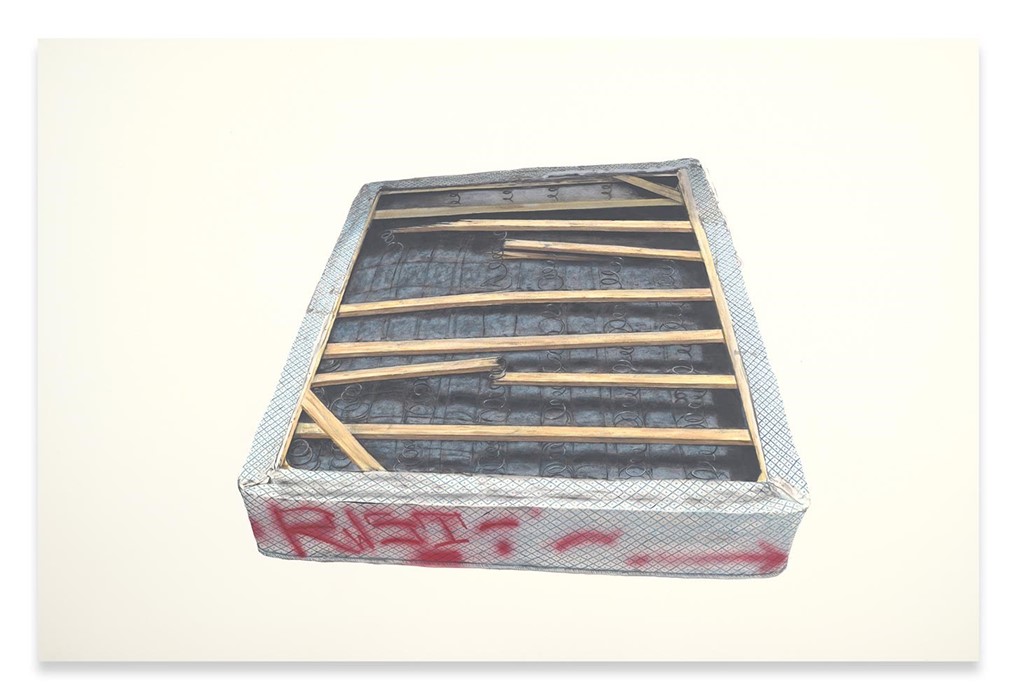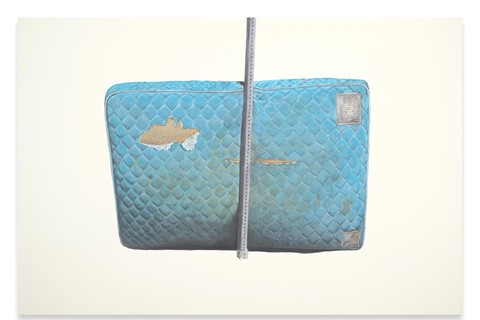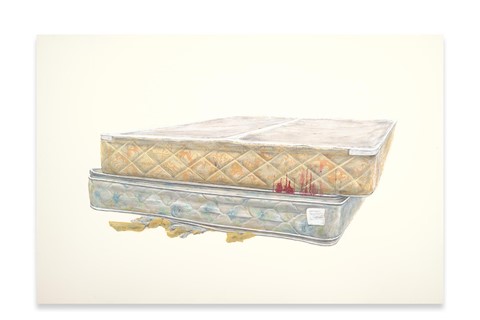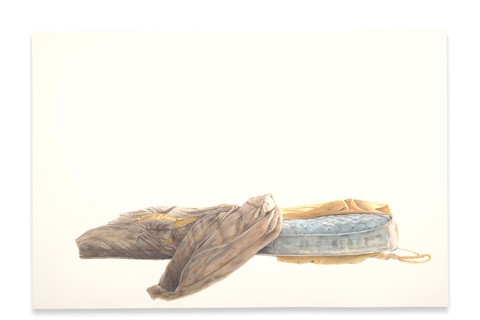The American artist's new series of paintings is an ode to Californian capitalism, viewed through a collection of discarded everyday objects
Who: Back in 1956, while driving a 1950 Ford from Oklahoma to Los Angeles with his childhood friend musician Mason Williams, artist Ed Ruscha was fascinated by the sights – mountains, billboards, diners, petrol stations – he saw along Route 66. His first job after college was designing layouts for an advertising agency, and the tendency to include typography and words in his work (often phrases overheard on the street) has remained a fixture throughout his career. For a long time he was considered Andy Warhol's Californian counterpart; in the 1960s Ruscha identified with the pop art movement, and was included in Walter Hopps' defining 1962 exhibition at Pasadena Art Museum, New Painting of Common Objects, alongside Warhol, Roy Lichtenstein and Phillip Hefferton. He was both strongly influenced by and a key portrayer of the American West and the Southern Californian landscapes and culture, and has worked with several mediums – photography, drawing, painting, film and printmaking. His versatility doesn’t end there, however: from pastels to blood and coffee, Ruscha went through pretty much every material imaginable in the 1970s.
What: Now 77, Ruscha is still active (and very prolific), working from his studio in the desert and taking regular road trips for inspiration. One of his signature means of depicting California is in a mono-subject series: between the early 1960s and late 1970s he produced 16 photography books dedicated to a single representative theme or object, among them Thirtyfour Parking Lots in 1967, Business Cards in 1968 and A Few Palm Trees in 1971. Metro Mattresses is the latest addition to this collection, a sort of throwback to his early work, almost 40 years on: intrigued by mattresses abandoned on the streets, he started photographing them whenever he spotted one around Los Angeles. For the new series, on show at Sprüth Magers Berlin from the 3rd of November, Ruscha also translated 12 of these images into large-scale paintings on museum board paper, accompanied by three 'word' pictures spelling out the exhibition's title like advertising slogans.

Why: Set against the same neutral backgrounds, the mattresses in Ruscha’s paintings acquire a sense of formality: the focus shifts onto the fabric patterns and padding structures, which transform into geometric abstractions, while the rips and the stains testify to the intimate experiences they have witnessed. By juxtaposing the familiar sensation of urban anonymity with the powerful intimacy of the mattresses, Ruscha evokes a sense of melancholy for these worn-out witnesses to romantic closeness, which have come to be discarded. In his own words, "the mattresses become not just litter in the landscape, but more like scary animals”. Metro Mattresses is another showcase of Ruscha's unique talent for idolising everyday objects by isolating a single suggestive entity, and also a taster for a major retrospective show planned at San Francisco's De Young museum next summer.
Metro Mattresses is on show at Sprüth Magers Berlin from November 3 2015 until January 16 2016.






